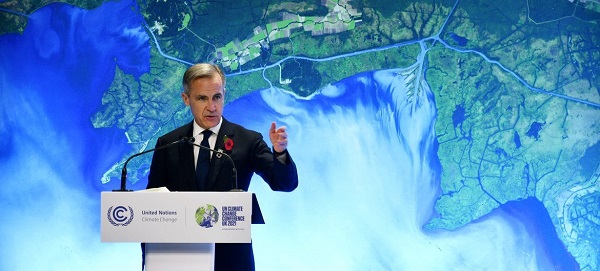Business
Trump’s tariff plan replaces free trade with balanced trade. Globalists hate that.
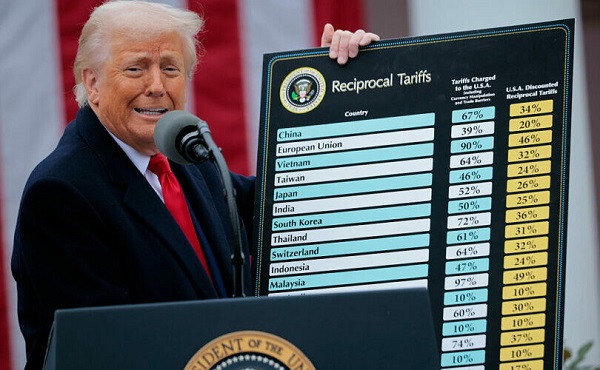
From LifeSiteNews
By Frank Wright
While globalists screech that Trump has descended into ‘madness,’ his ‘Liberation Day’ tariff plan that has shocked global markets is actually rooted in the combination of two economic theories that argue for ‘balanced’ trade over ‘free’ trade.
We are used to seeing the effects of Trump Derangement Syndrome in the blue-haired, red-faced hysterics who call the President “Orange Hitler.” Yet the introduction of tariffs on “Liberation Day” has seen the constituency of the differently-saned explode in a fit of rage at this “tariff madness.”
As global markets “plunge,” Trump replied to critics that “sometimes you have to take medicine to fix something.”
“We have been treated so badly by other countries – because we had stupid leadership that allowed this to happen. They took our businesses, they took our money, they took our jobs,” he says, saying American wealth has been effectively “moved” abroad. Trump promised that this “will eventually be straightened out – and our country will be solid and strong again”.
Taking Trump’s medicine
Is his remedy worse than the disease? MSNBC said the crash in global stock markets was the “cascading effect of stupid” tariffs imposed by Trump on U.S. imports. Britain’s Sky News came out swinging too, saying they were “the biggest assault on global trade since World War Two.”
Stocks in the USA, London, Europe, China and across Asia have “plummeted,” as the BBC and others have reported. The U.K.’s Financial Times said “political pressure” resulting from the painful “medicine” will mean “Trump’s tariffs won’t last long.” Yet the liberal bastion of The Guardian dared to suggest there may be a “masterplan” in “shaking up the global economy.”
Looking beyond the hysterical headlines, one writer on SubStack – Tree of Woe – has read the book on “scaled tariffs” which explains the method in Trump’s so-called madness.
1. Trump delivers
Tree of Woe, who recommends the medicine of “muscular Christianity” to combat the sickness of our times, introduces his readers to the fact that Trump campaigned on: “…plac[ing] tariffs that would raise revenue, protect American manufacturing, and restore balanced trade to our global economy.”
This was followed up on April 2 with the imposition of scaled tariffs – called “Liberation Day for American Trade” by Trump:
As Tree of Woe notes, the reaction from the globalist media was exceptional – even for them:
Soon after the unveiling of Trump’s executive order, the forces of neoliberal globalism orchestrated a counterattack of such rhetorical fierceness and economic malignity that it is virtually unparalleled in the history of fiercely malign economic rhetoric.
Anything seen as a threat to the liberal globalist forced consensus is branded as stupid, extremist or destructive. And so it was with the tariffs, whose aim is to replace imbalance and deepening debt with fair trade – and sustainable prosperity.
2. Theoretical basis for tariffs
Woe then shows how a book on economics provides the “theoretical basis for the Liberation Day tariffs.”
The book is called “Balanced Trade: Ending the Unbearable Cost of America’s Trade Deficits.” It was published in 2014 by three brothers – Jesse, Howard and the late Raymond Richman.
Jesse Richman had first published on “The Scaled Tariff” as a method of “producing balanced trade” in 2011.
As Tree of Woe explains, “…the book challenges the orthodox theory that free trade is always beneficial and argues for an alternate policy they call balanced trade.” He quotes the Richman brothers’ own explanation:
For the last several decades, the United States has generally played a cooperative strategy on trade with China and other[s]… U.S. markets have been open to Chinese goods…American leaders selected free trade on the basis of the (false) hope that China would reciprocate by opening its markets to American firms.
‘Free trade’ = American debt
Did China “liberalize” along with the rest of the global system – as Clinton prophesied in the 1990s?
The answer is no. Is this market balanced? The Richmans say, “In return for Chinese products, Americans go ever deeper into debt.”
Debt is a major problem here. The U.S. must refinance a quarter of its national debt – 9 trillion dollars – in 2025 and must do the same for a total of 28 trillion dollars in debt over the next four years. How can Americans reverse this decline?
The aptly named Richmans proposed one solution: “The scaled tariff.”
Extraordinary nonsense?
Does this add up to an answer? U.S. author James Surowiecki is billed as “the man who cracked the math” on Trump’s tariffs. He said the tariffs were “absurd,” and “based on imaginary numbers” – leading to a “woefully simplistic” view of world trade whose aim of balancing it was “an impossible, and not even desirable, goal.”
4. Doing the math on tariffs
Yet it seems it is Mr Surowiecki’s sums which do not add up. As Tree of Woe explains:
Now, let’s compare the Richmans’ approach to the Liberation Day tariff formula that Surowiecki called ‘extraordinary nonsense.’
The Liberation Day tariff formula takes the U.S. trade deficit with that country and dividing it by the value of the country’s exports to the United States, then divides that value in half. For instance, if China had a trade deficit with the US of $298 billion, and exports of $427 billion, then 0.5 x $298 billion / $427 billion) ~ 35%.
Do you see? Trump’s Liberation Day tariffs are calculated with the exact same formula as the Richmans’ scaled tariffs.
Tree of Woe explains:
In fact, if you read Trump’s executive order, it reads as if it was written by the Richmans.
Rarely in the history of presidential policy has a scholars policy formulation been so precisely followed.
He then supplies a little more detail:
The only difference is that Trump has also included a national strategic tariff of 10% as a baseline.
Where does this come from? Again, Tree of Woe shows it is inspired by another economist.
Trump trade policy is simply Ian Fletcher’s Free Trade Doesn’t Work combined with the Richmans’ Balanced Trade!
Why are these two models used by Trump?
The difference between the two is fundamentally a difference in priorities.
Fletcher prioritizes protection of key industry, while the Richmans emphasize reciprocity in trade flows.
5. The goal is balanced trade
So what does this mean in practice?
The Trump Administration has hedged its position – it’s adopted the scaled tariff in full, but with a low 10% national strategic tariff (Fletcher recommended 25%).
What is the overall goal? “Balanced trade,” as Tree of Woe puts it, combined with mutual or reciprocal trade agreements.
Both the Richmans’ book and the Trump Administration’s executive order offer the same answer here. Since the goal is not to achieve ‘free trade,’ it is to achieve balanced trade, therefore the method by which this is achieved is not “reciprocity of tariffs” but reciprocity of trade flows.
Conclusion: Balancing power
The wider foreign policy of the Trump administration is heavily influenced by realists like Dr. Sumantra Maitra, whose central point is that “power begs to be balanced.” These are tariffs which correct imbalance in trade and will reduce or even vanish where a balance is reached.
They punish “unfair” trade:
When trade is balanced, tariffs go to zero (or to 10%, in the Trump version). It’s clean, it’s efficient, and it’s effective.
Thus, Trump’s tariffs are reciprocal tariffs – but what they reciprocate against is unfair trade practice in generally, evidenced by an imbalance of trade, and not tariffs specifically.
Rebalancing of strategic power in trade as in diplomacy is the principle here. This is not only a method to a madness but now resembles a recipe for sanity and prosperity.
So there you have it. Far from being ‘extraordinary nonsense,’ Trump’s trade policy is in fact a careful implementation of trade policies that have been developed and detailed at book-length.
One of the cheerleaders of the chorus of disapproval – James Surowiecki writes for the globalist magazine The Atlantic.
He is the author of a 2005 book called “The Wisdom of Crowds.” In it, he spoke of the wisdom of the many versus that of the few. If balanced trade restores the American dream, why does he stand against the cause of the majority of American people?
Is this a wise crowd he leads? It is certainly shouting the loudest. Yet the numbers behind the tariffs are not imaginary, and it seems strange wisdom indeed to call balanced trade and the reduction of national debt an “insane goal.”
Tree of Woe was asked for comment. This is what he said: “America has not pursued a policy of balanced trade in almost a century. The pressure on the White House to revert back to our ordinary course of business is enormous. It remains to be seen whether President Trump will be able to sustain his tariff policy in the face of opposition from the economic elite. One thing is certain: America will never be great again if we don’t re-industrialize.”
You can read The Tree of Woe’s full report here.
Alberta
National Crisis Approaching Due To The Carney Government’s Centrally Planned Green Economy

From Energy Now
By Ron Wallace
Welcome to the Age of Ottawa’s centrally planned green economy.
On November 13, 2025, the Carney government announced yet another round of projects to be referred to the newly created Major Projects Office (MPO) established under the authority of the Building Canada Act (2025). That Office, designed to coordinate and streamline federal approvals for infrastructure projects deemed by Cabinet to be in the “national interest”. The announcement made scant reference to the fact that most of the referred projects had already received the regulatory permits required for construction or are, in several cases, already well under way.
Meanwhile, the aspirations of Alberta’s Premier Danielle Smith were not realized with a “Memorandum of Understanding” (MoU) signed with the Carney government before the 112th Grey Cup in Winnipeg. It remains to be seen if Canada and Alberta can in fact “create the circumstances whereby the oil and gas emissions cap would no longer be required” and if these negotiations will result in a “grand bargain” with the federal government. For its part, Alberta has signaled a willingness to change its industrial carbon tax program to encourage corporations to invest in emissions reduction projects while Alberta’s major energy producers have signalled that they are willing to consider carbon capture and methane reduction within an agreed industrial carbon pricing scheme. Notwithstanding concerns about its financial and technical viability, the Pathways Alliance Project appears to have become a cornerstone of Alberta’s negotiations with the federal government.
In early 2025 Premier Smith issued a list of nine demands accompanied by a six month ultimatum demanding the federal government roll back key elements of its climate policy. Designed to re-assert Alberta’s autonomy over natural resources, Smith’s core issues centered on the repeal of Bill C-69 (the “no new pipelines act) and Bill C-48 (the Oil Tanker Moratorium Act) scrapping the proposed Clean Electricity Regulations and abandonment of the net-zero automobile mandate. In face of a possible refusal by Ottawa to deal with these outstanding issues, Premier Smith launched a “Next Steps” panel as a province-wide consultation to “strengthen provincial sovereignty within Canada” – a process that could possibly lead to a referendum on Alberta’s future within Confederation.
Subsequently, in early October, Premier Smith also announced that her government, in collaboration with three pipeline industry partners, would advance an application to the Major Projects Office for a new oil pipeline from Alberta to a marine terminal on the northwest coast of British Columbia. The intent of the application is to have this new pipeline designated as a ‘project in the national interest’ to receive an accelerated review and approval timeline. Alberta is planning to submit that application in May 2026 to address the five criteria set by Ottawa for national interest determinations. Notably, the removal of what Premier Smith has termed ‘bad laws’ would be a prerequisite to construction of this proposed project.
As the Carney government continues its complex dance around these issues it remains to be seen how, or if, Smith’s demands for Canada to roll back federal legislation will be met. While Premier Smith staunchly advocated for the removal of what she termed to be the ‘bad laws’ standing in the way of the “ultimate approval” of a pipeline to the B.C. coast it remains to be seen if the Carney government will to accede to most, or even any, of these demands in ways that could clear the way for a new oil export pipeline from Alberta. At a time when the Carney government appears to be doubling down on its priority to reduce Canadian emissions it remains to be seen if Alberta can in fact increase oil production without increasing emissions.
Liberal MP Corey Hogan, who serves as parliamentary secretary to the Minister of Energy and Natural Resources the Honourable Tim Hodgson, noted that: “So as long as we can get to common understandings of what all of those mean, there’s not really a need for an emissions cap.” This ‘common understanding’ may signal a willingness by Ottawa to set aside the Trudeau government’s signature proposed oil and gas emissions cap in exchange for major carbon capture and storage projects in Alberta that would be combined with strong carbon pricing and methane regulations.
While this ‘common understanding’ may yet lead to a ‘grand bargain’ it would nevertheless effectively create two different classes of oil in Canada, each operating under different sets of regulations and different cost structures. Western Canada’s crude oil producers would be forced to shoulder costly and technically challenging decarbonization requirements in face of a federal veto over any new oil projects that weren’t ‘decarbonized.’ Canadian-produced oil would be faced with entering international export markets at a significant, if not ruinous, competitive disadvantage risking not only profitability but market share. Meanwhile, this hypocritical policy would allow eastern Canadian oil refiners to import ‘carbonized’ oil from countries with significantly looser environmental standards.
Carney’s November 2025 “Canada Strong” federal budget sets out $141.4 billion in new spending over five years with a projected $78.3 billion deficit for 2025–26. As Jack Mintz points out, while that budget claims to be “spending less to invest more”, annual capital spending will double from $30 billion a year to $60 billion a year over five years:
“… as federal program spending, which excludes interest on debt, is forecast to rise by 16 per cent from $490 billion this fiscal year to $568 billion in 2029-30. During the current year alone, the spending increase is a remarkable seven per cent. Public debt charges will soar by 43 per cent from $53 billion to $76 billion due to growing indebtedness and higher interest rates. No surprise there. Deficits — $78 billion this year alone — accumulate by a whopping $320 billion over five years.”
Since 2015 Canada has experienced a flight of investment capital approaching CAD$650 billion due to lost, or deferred, resource projects – particularly in the energy sector. While many economists recognize that Canada’s fiscal status may be worse than it appears, the Carney government is asking Canadians to ignore these figures while they implement industrial policies that, for all intents and purposes, represent a significant regression into central planning. The ‘modernization’ of the National Energy Board that began early in the Trudeau government’s mandate appears now to have been but a first step in the progressive centralization of control by the federal government. Gone are the days when an independent expert energy regulator made national interest determinations based upon cross-examined evidence presented in a public forum. Instead, a cabinet cloaked in confidentiality that is clearly inclined toward emissions reduction as its paramount consideration, will now determine and select projects.
This process of centralized decision-making represents a dilemma that confronts not just Premier Smith but the entire Canadian energy sector. The emerging financial debacle in the Canadian EV battery and vehicular manufacturing market is but one example of how centrally planned criteria designed to achieve a Net Zero economy will almost invariably lead to unanticipated, if not economically disastrous, results.
In short, the “green economy” is not working. The Fraser Institute noted that while Federal spending on the green economy surged from $600 million in 2014/15 to $23 billion in 2024/25, a nearly 40-fold increase, the green economy’s share of GDP rose only marginally from 3.1% in 2014 to 3.6% in 2023. Moreover, promised “green jobs” have not materialized at scale while traditional energy sectors vital to Alberta’s and the Canadian GDP have been actively constrained.
This economic reality has apparently not yet dawned in Ottawa. As Gwyn Morgan points out, Prime Minister Carney who, in 2021 with Michael Bloomberg, launched the Glasgow Financial Alliance for Net Zero (GFANZ), has not changed his determination to hike Canadian carbon taxes, proposing to increase the industrial levy from $80 to $170/ton by 2030. GFANZ was created to align global financial institutions with net-zero emissions targets bringing together sector-specific alliances like the Net Zero Banking Alliance (NZBA) and the Net Zero Asset Managers (NZAM). However, early in 2025 GFANZ faced significant challenges as major U.S. banks exited the NZBA followed by the Net-Zero Insurance Alliance (NZIA) that disbanded entirely in 2024 after a wave of member withdrawals. GFANZ was forced to undergo a strategic restructuring in January 2025 to shift from a coalition-of-alliances to a more open, standalone platform focused on mobilizing capital for the low-carbon transition through pragmatic climate financing. ‘Pragmatic’ indeed.
While Carney’s GFANZ has effectively imploded, his government ignores developing new realities in climate policy by continuing to implement the Trudeau government’s green agenda with programs like the Pan-Canadian Framework on Clean Growth and Climate Change. That program contains a plethora of ‘green economy’ measures designed to reduce carbon emissions in parallel with the 2030 Emissions Reduction Plan that commits Canada to reducing greenhouse gases (GHG) to achieve net-zero by 2050.
These policies ignore the recent change of mind by thought-leaders like Bill Gates who acknowledges that “climate change, disease, and poverty are all major problems we should deal with them in proportion to the suffering they cause.” This aligns his thinking with that of Bjorn Lomborg who states:
“Climate change demands action, but not at the expense of poverty reduction. Rich governments should invest in long-overdue R&D for breakthrough green technologies — affordable, reliable alternatives that everyone, rich and poor alike, will adopt. That is how we can solve climate without sacrificing the vulnerable. More countries, including Canada, need to get on board with the mission of returning the World Bank to focusing on poverty. Raiding development funds for climate initiatives isn’t just misguided. It’s an affront to human suffering.”
Philip Cross also expressed hope that 2025 may yet represent a “turning point in a return to sanity in public policy:”
“Nowhere is the change more evident than in attitudes to green energy policies, once the rallying cry for left-wing parties in North America. Support has collapsed for three pillars of green energy advocacy: building electric vehicles to eliminate our need for oil pipelines and refineries; using the financial clout of the Net-Zero Banking Alliance to force firms to eliminate carbon emissions; and legally mandating the shift from fossil fuels to green energy.”
Nonetheless, Prime Minister Carney appears resolute in the belief that Canadian policies for Net Zero are not hobbling investment in the energy sector while choosing to ignore alternative regulatory and investment tools that could make a material difference for the economy. Carney also appears to ignore major Canadian firms like TC Energy that have re-directed investments of $8.5 billion into the U.S. as they cite significant concerns about the Canadian regulatory structure. Similarly, Enbridge has advocated for “significant energy policy changes” in Canada while focussing attention not on new export pipelines but instead to incrementally upgrade capacity within its existing Mainline system network.
Canada’s destiny as a ‘decarbonized energy superpower’ will be largely determined by the serious economic consequences that will result from a sustained ideological push into ‘clean energy’. That said, will this be accomplished by a chaotic, ever-more centralized process of decision making, masquerading as a coherent national energy policy?
Conclusion
As Gwyn Morgan has succinctly written, it remains to be seen if the Carney government will be willing to make a “climate climbdown” in face of the reality that net zero goals are being broadly abandoned globally or will they continue to sacrifice the Canadian economy to single-minded, unrealistic or unattainable, goals for emissions reduction?
To date none of the projects referred by the Carney government to the Major Projects Office has been designated as ‘being in the national interest’. Moreover, the Alberta bitumen pipeline advocated by Premier Smith has not yet appeared on any list. Nonetheless, she apparently remains resolute in maintaining negotiations with Ottawa stating: “Currently, we are working on an agreement with the federal government that includes the removal, carve out or overhaul of several damaging laws chasing away private investment in our energy sector, and an agreement to work towards ultimate approval of a bitumen pipeline to Asian markets.”
As Alberta’s ultimatums and deadlines to Ottawa pass, it would be reasonable to question whether Premier Smith is, in fact, being confronted with the illusory freedom of a Hobson’s choice: Either Alberta must accept, at unprecedented cost, Ottawa’s determination to realize Net Zero or it will get nothing at all. While she may be seeking federal support to enable, or accelerate, construction of new pipelines, all Ottawa may be willing to concede is a promise to do better with an MoU that would ultimately impose massive costs for ‘decarbonization’ on Alberta while eastern Canada imports oil from other, less constrained, jurisdictions. Is this a “Grand Bargain?”
Budget 2025 has introduced a Climate Competitiveness Strategy for nuclear, hydro, wind and grid modernization that projects over CAD$1 trillion in spending over five years. It also reaffirms a commitment to increase carbon taxes by $80-$170/tonne for CO2-equivalent emissions by 2030. Since it appears committed to maintaining, or even expanding, Trudeau-era green legislation, some might question any commitments from the Carney government to enter into an even-handed debate on Canadian energy policies that are so critical to Alberta’s energy sector? As the Fraser Institute points out:
“The Canadian case shows an even greater mismatch between Ottawa’s COP commitments and its actual results. Despite billions spent by the federal government on the low-carbon economy (electric vehicle subsidies, tax credits to corporations, etc.), fossil fuel consumption increased 23 per cent between 1995 and 2024. Over the same period, the share of fossil fuels in Canada’s total energy consumption rose from 62.0 to 66.3 per cent.”
While the creation of the MPO may give the appearance of accelerating projects deemed to be in the national interest it nonetheless requires a circumvention of an existing legislative base. This approach further enhances a centrally-planned economy and presupposes that more, not less, bureaucracy will somehow make Canada an “energy superpower”.
Canada continues to overlook rising economic challenges while pursuing climate goals with inconsistent policies. As such, it risks becoming an outlier in energy policy at a time when the world is beginning to recognize the immense costs and implausibility of implementing policies for Net Zero.
Premier Danielle Smith may yet face a pivotal moment in Alberta’s, and possibly Canadian, history. If Ottawa’s past performance is but a prologue, predictions of a happy outcome may require a significant dose of optimism.
Ron Wallace is a former Member of the National Energy Board.
Alberta
Alberta Offers Enormous Advantages for AI Data Centres
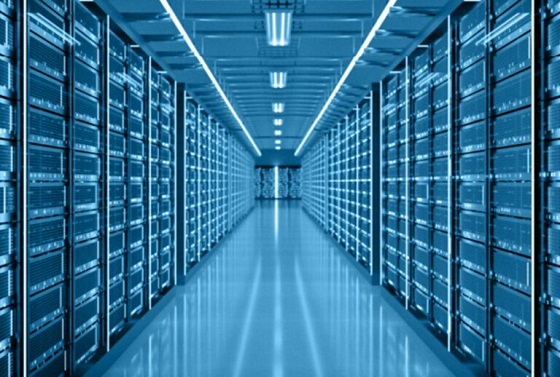
Fr0m Energy Now
By Yogi Schulz
Alberta offers significant advantages compared to other jurisdictions in the competitive race to attract AI data centres. Alberta Premier Danielle Smith clearly understands the opportunity. She has charged Affordability and Utilities Minister Nathan Neudorf, Technology and Innovation Minister Nate Glubish and Finance Minister Nate Horner to complete and publicly announce the province’s AI data centre attraction strategy. Please lobby your Member of the Legislative Assembly to express your support for realizing this economic development opportunity.
How big is the opportunity?
Amazon, Alphabet, Meta, and Microsoft are investing hundreds of billions in AI data centers. Their 2025 capital expenditures are expected to total roughly $370 billion, and they anticipate this number will continue to rise in 2026. Smaller AI software companies, cloud service providers, and their suppliers are also making multi-billion-dollar investments. Some commentators are projecting that the AI boom will trigger trillions of dollars in capital investment.

Source: Big tech 2025 capex may hit $200 billion as gen-AI demand booms, Bloomberg Intelligence, October 4, 2024
In a recent call with analysts, Bernstein analyst Mark Moerdler asked whether Microsoft was spending into a bubble. Chief Financial Officer Amy Hood responded that AI-related demand still outpaces Microsoft’s spending. “I thought we were going to catch up. We are not,” she said.
Here’s a summary of the advantages that attract AI data centres to Alberta. Turning these advantages into reality can bring prosperity to all Albertans.
Alberta natural gas
Alberta has extensive natural gas reserves. The Alberta Energy Regulator’s updated natural gas reserves for 2025 have nearly doubled Alberta’s natural gas reserves to 130 trillion cubic feet, moving Canada from 15th to 9th place globally among producing nations. The advantage is that AI data centre proponents will have access to cheap, reliable natural gas for electricity generation for decades to come.

Source: Alberta Energy Outlook (ST98), AER, March 2025

Source: Alberta Energy Outlook (ST98), AER, March 2025
Alberta electricity
Alberta is the only province with investor-owned electricity generation and transmission. The advantage is that AI data centre proponents don’t have to deal with slow-moving government-owned monopolies to purchase electricity and attach their data centres to the electricity distribution grid.

Source: Varcoe: Threat of system shock remains for Alberta electricity market, with ‘hurricane brewing’ amid current calm, Calgary Herald, March 28, 2025
The Alberta government announced that it will fast-track AI data centre projects that include “bring your own power” generation projects. Many AI data centre proponents are happy to make that investment because it will give them:
- The high 24/7/365 availability they need.
- Control over energy costs.
- Compressed permitting and construction timelines.
The “bring your own power” approach also addresses the consumer concern about the potential impact on electricity prices that an AI data centre might have.
Alberta infrastructure
Alberta operates a well-developed infrastructure consisting of:
- Excellent roads.
- Widely available high-speed telecom.
- Many airports, some with excellent international connections.
- Low road congestion compared to most other jurisdictions.
- Lots of cheap land, unlike parts of Ontario, Quebec and the Lower Mainland.
- Reliable utilities.
The advantage is that AI data centre proponents don’t have to build their own infrastructure before they can start an AI data centre.
Alberta business environment
Alberta operates a business-friendly environment consisting of:
- A pro-business, pro-investment government attitude, unlike some other provinces.
- A well-defined, predictable regulatory environment.
- An entrepreneurial business community.
- A pro-economic growth mindset among Albertans.
- Modest business taxes.

Source: Economic Intelligence Unit, April 18, 2023
The advantage of the Alberta business environment is that proponents of AI data centres are welcomed, thereby avoiding the risks and impediments found in other jurisdictions.
The Alberta advantage
The many Alberta advantages compared to other jurisdictions that are competing against Alberta for AI data centres include:
- Presence of multiple, credible post-secondary education institutions.
- A significant population with advanced degrees.
- A substantial community of experienced information technology professionals.
- Close to the USA and in an easily managed time zone.
- The rule of law.
- A culture of respect and acceptance.
- Use of the English language with few accents.
- Proximity to many outdoor amenities, such as the Rocky Mountains.
- A well-functioning province with reliable utilities, superior transportation alternatives, clean air, affordable schools, and low crime.
- Immediate access to superior health care.
- Affordable housing and land prices compared to other major cities.
- Availability of first-class office space at a low rental cost.
- Availability of a wide range of cultural amenities.

Source: Economic Intelligence Unit, December 14, 2023
The benefits of the Alberta advantage for the staff of AI data centre proponents are the high livability values.
Alberta’s superior natural gas
Natural gas customers, including AI data centres, prefer to buy from Alberta because of our:
- High ESG rating, including low GHG emissions.
- Competitive prices.
- Reliable delivery performance.
- Predictable regulatory framework.
- Rule of law to resolve disputes.

Source: Canada’s Oil Industry Leads the World in ESG – But What Does That Mean?, November 4, 2021, EnergyNow Media
Superior natural gas enables AI data centre proponents to demonstrate their environmental consciousness.
Alberta climate
The advantage of the colder climate and ample water resources in Northern Alberta is that AI data centre proponents can reduce their cooling costs.
Alberta faces a critical decision window. Microsoft, Amazon, Meta and others are committing hundreds of billions to building AI data centres. Jurisdictions that move the fastest on permitting, land assembly, and electricity infrastructure will capture the first wave of investment. Alberta’s multiple advantages, including low-cost energy, private electricity markets, abundant land, and regulatory predictability, position it to be a first-tier competitor. Will policymakers execute the attraction strategy at the speed these tech giants demand? Jurisdictions that hesitate will find themselves competing for second-tier projects within an estimated 18 months.
Yogi Schulz has over 40 years of experience in information technology in various industries. He writes for Engineering.com, EnergyNow.ca, EnergyNow.com and other trade publications. Yogi works extensively in the petroleum industry to select and implement financial, production revenue accounting, land & contracts, and geotechnical systems. He manages projects that arise from changes in business requirements, the need to leverage technology opportunities, and mergers. His specialties include IT strategy, web strategy, and systems project management.
-
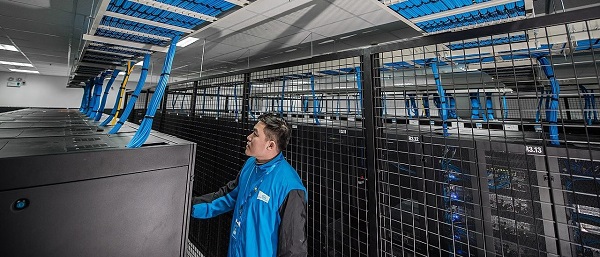
 Artificial Intelligence2 days ago
Artificial Intelligence2 days agoAI Faces Energy Problem With Only One Solution, Oil and Gas
-

 Health2 days ago
Health2 days agoLack of adequate health care pushing Canadians toward assisted suicide
-
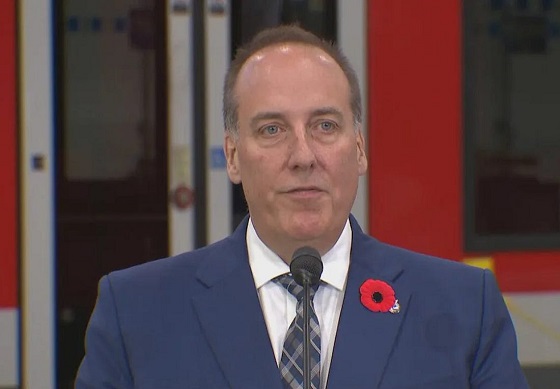
 National2 days ago
National2 days agoWatchdog Demands Answers as MP Chris d’Entremont Crosses Floor
-
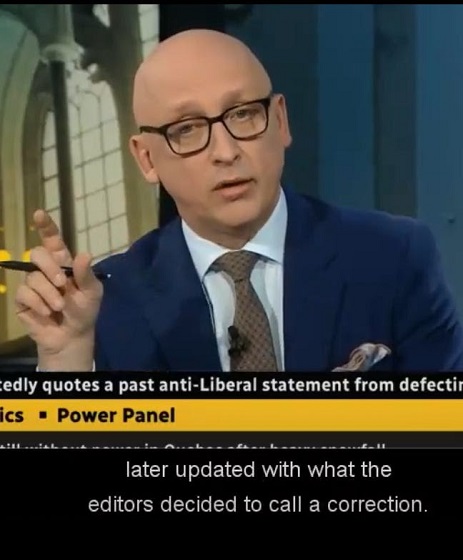
 Media1 day ago
Media1 day agoBreaking News: the public actually expects journalists to determine the truth of statements they report
-
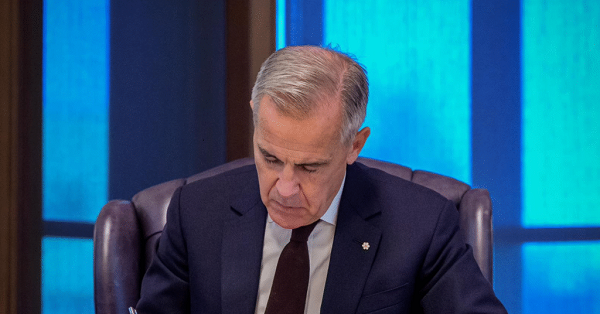
 Business1 day ago
Business1 day agoLiberal’s green spending putting Canada on a road to ruin
-
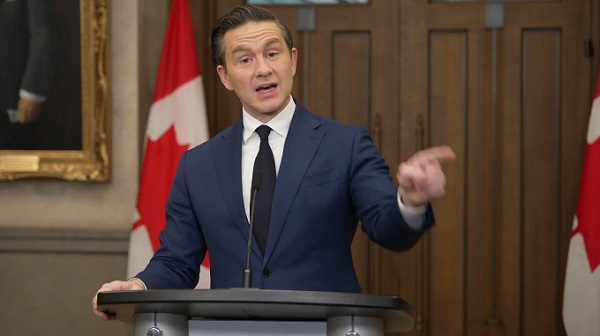
 Artificial Intelligence1 day ago
Artificial Intelligence1 day agoAI seems fairly impressed by Pierre Poilievre’s ability to communicate
-
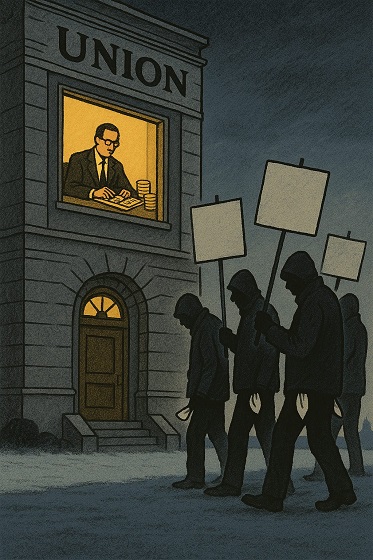
 Alberta2 days ago
Alberta2 days agoATA Collect $72 Million in Dues But Couldn’t Pay Striking Teachers a Dime
-
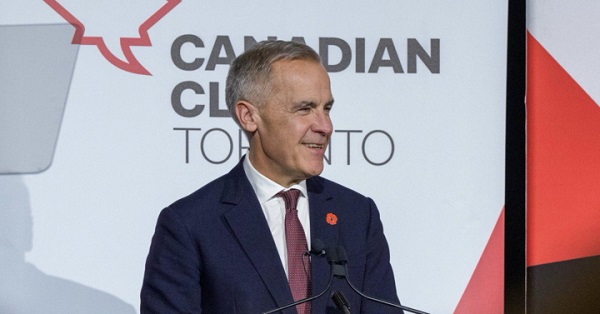
 Business1 day ago
Business1 day agoCarney doubles down on NET ZERO


